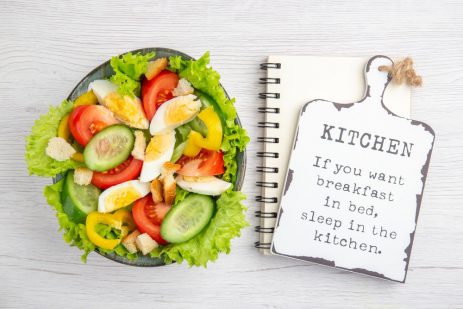Jeff Bezos, Confessions, and the Grand Vision: How the Amazon Founder Plans to Transform the World
Few business leaders have stirred equal parts awe, skepticism, and fascination as Jeff Bezos. Over the decades, he has moved from founding...
CARLES PUYOL: Confesiones que estremecen, lecciones que inspiran y un libro que revela al hombre detrás del mito
Introducción Durante más de una década, Carles Puyol fue la personificación del coraje, del sacrificio y del amor por el fútbol. Su...
Carmen Maura: confesiones, risas y verdades en El Hormiguero. La actriz que sigue siendo una rebelde discreta
1. Introducción: una leyenda viva que vuelve a hablar Hay artistas que desaparecen del foco y otros que, con una sola frase, son capaces...
Eco-Friendly Initiatives That Truly Transform Cities
Cities around the world are undergoing a remarkable shift as local governments, community groups, and private innovators respond to the urgent need for more sustainable living. The most impactful eco-friendly initiatives are not simply cosmetic, like planting a few trees or placing more bins on sidewalks, but rather structural changes that reshape how people interact with their urban environment. For example, repurposing old industrial zones into green corridors does more than beautify neglected areas; it contributes to biodiversity, encourages physical activity, and mitigates urban heat. Similarly, investing in renewable-powered public transportation not only reduces emissions but also redefines mobility by making it convenient, affordable, and efficient. What makes these initiatives transformative is their ability to address multiple challenges at once—climate resilience, public health, economic vitality, and community cohesion—rather than treating sustainability as a peripheral goal. Cities that embrace urban farming projects, for instance, don’t just reduce food miles; they also foster local entrepreneurship and help residents reconnect with the origins of their food. The power of these approaches lies in their scalability; when communities experience direct benefits from cleaner air, safer streets, or lower energy bills, enthusiasm for change grows, creating a culture where sustainable practices become the norm. Ultimately, the most successful eco-friendly efforts are those that integrate seamlessly into daily life, shaping cities that are not only greener but also more livable, equitable, and inspiring for future generations.
The Art of Photography for Beginners: How to Take Stunning Shots
Photography is often described as the art of capturing light, but for beginners, it can feel more like the challenge of managing equipment, angles, and timing. The truth is, stunning shots do not come only from expensive cameras or specialized gear—they come from a thoughtful eye and an understanding of a few essential techniques. At the heart of photography lies observation: the ability to notice how shadows fall, how colors interact, and how a simple subject can tell a deeper story. Many newcomers underestimate the importance of composition, yet even the most ordinary scenes can transform into powerful images when framed with intention. Learning simple guidelines, such as the rule of thirds or leading lines, provides a foundation to build upon and helps photographers move beyond snapshots to more deliberate creations. Equally important is experimenting with light, both natural and artificial. Soft morning light, golden sunsets, or even the glow from a nearby lamp can all add mood and dimension to a photo if used with care. Beginners should also practice patience; taking multiple shots, adjusting angles, and noticing small details often lead to surprising results. Modern technology makes this exploration easier than ever—smartphones and digital cameras allow endless experimentation without the pressure of film. Above all, photography should feel like a balance between technical knowledge and personal expression. Each image offers a chance to capture not just what is in front of the lens, but also how the world feels in that fleeting moment. For those starting out, the joy is in discovering how much beauty can be revealed by slowing down, observing carefully, and letting curiosity guide the click of the shutter.
Quick Exercises to Improve Posture and Reduce Back Pain
Many of us spend long hours sitting at desks, hunched over keyboards, or looking down at our phones, habits that can eventually lead to rounded shoulders, stiff necks, and persistent back pain. While investing in ergonomic chairs or standing desks can certainly help, one of the most effective remedies is simpler than most people realize: short, targeted exercises that loosen tight muscles, strengthen weak ones, and realign posture. You don’t need a gym membership or even a full workout session to make a difference—just a few minutes a day of intentional movement can relieve tension, improve circulation, and train the body to sit and stand tall again. Think of exercises such as gentle chest openers to counteract slouching, seated twists to release your spine, or small core activations that stabilize posture without a heavy workout. Not only can these movements help reduce nagging aches in your back and shoulders, they can also improve energy levels and mental focus by making breathing easier and circulation smoother. The key is consistency: when performed regularly, even the simplest stretches and strength moves gradually retrain your body, easing pain and preventing further strain. Whether you’re working from home, commuting to the office, or just trying to feel more comfortable throughout the day, adding a few posture-boosting exercises into your routine may be one of the easiest health upgrades you can make. With just minutes of practice, you’ll stand taller, feel lighter, and enjoy greater freedom from the discomfort that often comes with modern, sedentary living.
Psychology of Learning: How to Easily Remember New Information
Remembering new information is often less about raw effort and more about understanding how our minds naturally process and store knowledge. People frequently assume that memory is a fixed ability—some are “good with facts” and others are not—but research in cognitive psychology suggests that memory can be trained, strengthened, and optimized through the right strategies. At its core, memory is deeply connected to how we engage with information: how much attention we give it, how meaningfully we connect it to what we already know, and how often we revisit it in different contexts. This means that learning does not have to be a tiring process of repetition, but rather a conscious effort to work with the natural mechanics of the brain. For instance, one of the most effective tools is retrieval practice, the act of trying to recall information without looking at the source. This forces the brain to reconstruct knowledge, which not only reinforces learning but also makes recall easier in the future. Similarly, spacing out study sessions challenges the brain to retrieve stored content after short intervals of forgetting, which strengthens the memory trace. Using associations, such as mental images or connecting a fact to a personal story, also makes new material more memorable because our brains are wired to hold onto meaning rather than isolated data. Ultimately, remembering is not just about working harder—it is about working smarter, aligning study habits with the rhythms of how memory truly operates.
Healthy Eating Without Complicated Recipes: Tips for Your Daily Menu
When people think about eating healthy, they often imagine long lists of ingredients, hours in the kitchen, and expensive specialty products. The truth is, nourishing meals don’t need to be complicated at all. In fact, the simpler you keep things, the easier it becomes to maintain healthy habits consistently. Everyday ingredients you already have on hand can be combined in ways that are both satisfying and beneficial to your body. Fresh fruits, vegetables, whole grains, and lean proteins are the backbone of well-balanced meals, and they don’t require advanced cooking skills to prepare. A colorful salad topped with beans or grilled chicken, oatmeal with fruit and nuts, or a quick stir-fry with vegetables and rice are achievable options even on busy days. Small changes, like swapping sugary drinks for water or choosing whole-grain bread instead of white, make an impact over time without overwhelming your routine. The key is not perfection but balance and consistency. You don’t need to try every diet trend or cook elaborate dishes; focusing on wholesome, accessible foods can provide energy, improve your mood, and support long-term health. Planning simple menus ahead of time, keeping healthy snacks visible, and listening to your body’s natural hunger cues all play a role in building a sustainable approach to eating well. With a few mindful choices and an emphasis on practicality, you can enjoy food that is both easy to prepare and nourishing, showing that healthy eating can truly fit into any lifestyle—even the busiest ones.
Nature Travel: The Most Fascinating National Parks Around the World
National parks are much more than destinations marked on a traveler’s map—they are living sanctuaries of biodiversity, geology, and...
Basics of Financial Literacy: How to Plan a Budget Without Stress
For many people, the idea of creating a budget feels intimidating, often associated with restrictions, complicated spreadsheets, or financial jargon that seems designed to overwhelm rather than empower. Yet, budgeting at its core is simply about understanding where your money goes and making sure it serves your goals instead of slipping away unnoticed. Financial literacy begins with this basic awareness—the recognition that money is a tool, not a source of stress. A good budget is not about denying yourself small joys but about gaining control and creating room for the things that truly matter. The first step is to track your income and expenses in the simplest way possible. This doesn’t mean poring over receipts for hours each week; it could be as straightforward as using a budget app or keeping a short weekly note of what goes in and what comes out. What this creates is clarity: once you know what you’re actually spending, you can identify habits that might be quietly draining your resources, like unused subscriptions or frequent impulse purchases. The next step is to prioritize. Essential costs like rent, utilities, and groceries come first, followed by obligations such as debt payments and savings. What remains is your flexible spending—an area where you can make intentional choices instead of decisions based on immediate impulses. The key to reducing stress is to approach budgeting as a flexible plan rather than a rigid rulebook. Life changes, and so should your financial map. By treating it as a living tool, you’re more likely to stick with it and adapt it to support your long-term goals.
















